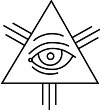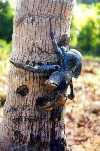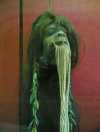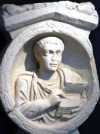 During the 1970s, computer system resources like disk space and memory were fairly limited, and software developers worked long hours to produce small, efficient software products. Although technology has since improved, the industry’s focus on marketing and rapid coding has resulted in the proliferation of bloatware—software that gets larger and more complex with each version without providing obvious benefits to users. Which of today’s programs are often cited as examples of bloatware? Discuss
During the 1970s, computer system resources like disk space and memory were fairly limited, and software developers worked long hours to produce small, efficient software products. Although technology has since improved, the industry’s focus on marketing and rapid coding has resulted in the proliferation of bloatware—software that gets larger and more complex with each version without providing obvious benefits to users. Which of today’s programs are often cited as examples of bloatware? Discuss
Source: The Free Dictionary
 Often interpreted as the eye of God watching over man, the Eye of Providence depicts an eye enclosed in a triangle and surrounded by rays of light. Found on the back of the US one-dollar bill, the Eye was adopted as part of the country’s Great Seal in 1782. While the symbol in its modern form emerged in the West in the 17th and 18th centuries, representations of an all-seeing eye existed in ancient Egypt. Conspiracy theorists trace the Eye’s inclusion in the Great Seal to its use by what group?
Often interpreted as the eye of God watching over man, the Eye of Providence depicts an eye enclosed in a triangle and surrounded by rays of light. Found on the back of the US one-dollar bill, the Eye was adopted as part of the country’s Great Seal in 1782. While the symbol in its modern form emerged in the West in the 17th and 18th centuries, representations of an all-seeing eye existed in ancient Egypt. Conspiracy theorists trace the Eye’s inclusion in the Great Seal to its use by what group?  A hermit crab, the coconut crab is remarkable for its massive pincers as well as its sheer size—it is the world’s largest known terrestrial arthropod. Unlike most hermit crabs, coconut crabs cannot swim. Instead of gills, they possess a special organ called a branchiostegal lung, which is suited to absorb oxygen from air rather than water but must be kept moist if it is to function. Why is this type of crab popularly associated with the coconut?
A hermit crab, the coconut crab is remarkable for its massive pincers as well as its sheer size—it is the world’s largest known terrestrial arthropod. Unlike most hermit crabs, coconut crabs cannot swim. Instead of gills, they possess a special organ called a branchiostegal lung, which is suited to absorb oxygen from air rather than water but must be kept moist if it is to function. Why is this type of crab popularly associated with the coconut?  The Shuar people of Ecuador and Peru first came to worldwide attention in the 1800s, after Westerners discovered that the group practiced head shrinking. The custom stems from the belief that severing an enemy’s head and shrinking it harnesses the person’s spirit and compels it to serve the shrinker. Though cultural restrictions limited the manufacture of shrunken heads, Western demand for the macabre artifacts prompted the Shuar to produce them in greater quantities. How does one shrink a head?
The Shuar people of Ecuador and Peru first came to worldwide attention in the 1800s, after Westerners discovered that the group practiced head shrinking. The custom stems from the belief that severing an enemy’s head and shrinking it harnesses the person’s spirit and compels it to serve the shrinker. Though cultural restrictions limited the manufacture of shrunken heads, Western demand for the macabre artifacts prompted the Shuar to produce them in greater quantities. How does one shrink a head?  Steganography is the practice of hiding secret messages in seemingly innocuous documents such as pictures, articles, or shopping lists. The practice dates to the 5th c BCE, when early practitioners concealed information under the wax of wooden writing tablets or on the tattooed scalps of slaves. As technology evolved, so did steganography; and today, information is often hidden in computer files. Which terrorist group has been accused of using steganography to transmit secrets over the Internet?
Steganography is the practice of hiding secret messages in seemingly innocuous documents such as pictures, articles, or shopping lists. The practice dates to the 5th c BCE, when early practitioners concealed information under the wax of wooden writing tablets or on the tattooed scalps of slaves. As technology evolved, so did steganography; and today, information is often hidden in computer files. Which terrorist group has been accused of using steganography to transmit secrets over the Internet?  The Guaymí are an indigenous group living primarily within the Ngöbe-Buglé region of western Panama. Spanish conquistadors found 3 Guaymí tribes—the Nata, Parita, and Urracá—after settling Panama in the 16th century. Urracá, leader of the tribe that took his name, is the most well known of the 3 tribal chiefs. Famed as a Panamanian freedom fighter, Urracá battled and defeated the Spaniards on several occasions. In what mainstream industries do members of the once-isolated Guaymí tribes now work?
The Guaymí are an indigenous group living primarily within the Ngöbe-Buglé region of western Panama. Spanish conquistadors found 3 Guaymí tribes—the Nata, Parita, and Urracá—after settling Panama in the 16th century. Urracá, leader of the tribe that took his name, is the most well known of the 3 tribal chiefs. Famed as a Panamanian freedom fighter, Urracá battled and defeated the Spaniards on several occasions. In what mainstream industries do members of the once-isolated Guaymí tribes now work?  Though few authorities include Amblypoda in modern classifications, scientists once defined it as a group of extinct, herbivorous mammals common to North America during the Tertiary period. Once considered a suborder of primitive ungulates, or hoofed mammals, experts have since concluded that members do not share a common ancestor. They do agree, however, that the group’s members had very small brain cavities relative to their mass. From what physical characteristic is the group’s name derived?
Though few authorities include Amblypoda in modern classifications, scientists once defined it as a group of extinct, herbivorous mammals common to North America during the Tertiary period. Once considered a suborder of primitive ungulates, or hoofed mammals, experts have since concluded that members do not share a common ancestor. They do agree, however, that the group’s members had very small brain cavities relative to their mass. From what physical characteristic is the group’s name derived?  The massive 1883 eruption of the volcanic island of Krakatoa in Indonesia ejected more than 6 cu mi (25 cu km) of rock and ash, destroyed the island, and left more than 36,000 people dead. The eruption’s explosive power was about 13,000 times greater than that of the atomic bomb dropped on Hiroshima, and the sound of the explosion, believed to be the loudest sound in recorded history, was heard some 3,000 mi (4,828 km) away. What was the only living thing researchers found on the island in 1884?
The massive 1883 eruption of the volcanic island of Krakatoa in Indonesia ejected more than 6 cu mi (25 cu km) of rock and ash, destroyed the island, and left more than 36,000 people dead. The eruption’s explosive power was about 13,000 times greater than that of the atomic bomb dropped on Hiroshima, and the sound of the explosion, believed to be the loudest sound in recorded history, was heard some 3,000 mi (4,828 km) away. What was the only living thing researchers found on the island in 1884?  Oleander is an evergreen shrub that grows well in warm subtropical regions and is native to a broad area that extends from Morocco to China. Its fragrant flowers grow in a variety of colors, and it is widely used as an ornamental plant in landscapes and parks. It is also one of the most poisonous known plants and contains several toxic, sometimes deadly, compounds. Even its bark contains rosagenin, which is known for its strychnine-like effects. Why is oleander the official flower of Hiroshima?
Oleander is an evergreen shrub that grows well in warm subtropical regions and is native to a broad area that extends from Morocco to China. Its fragrant flowers grow in a variety of colors, and it is widely used as an ornamental plant in landscapes and parks. It is also one of the most poisonous known plants and contains several toxic, sometimes deadly, compounds. Even its bark contains rosagenin, which is known for its strychnine-like effects. Why is oleander the official flower of Hiroshima?